You’ve successfully rooted your plant cuttings in water…now what? Not quite sure when to transfer your cuttings to soil? Stick around, and I’ll give you my best tips on how (and when) to pot up your cuttings!
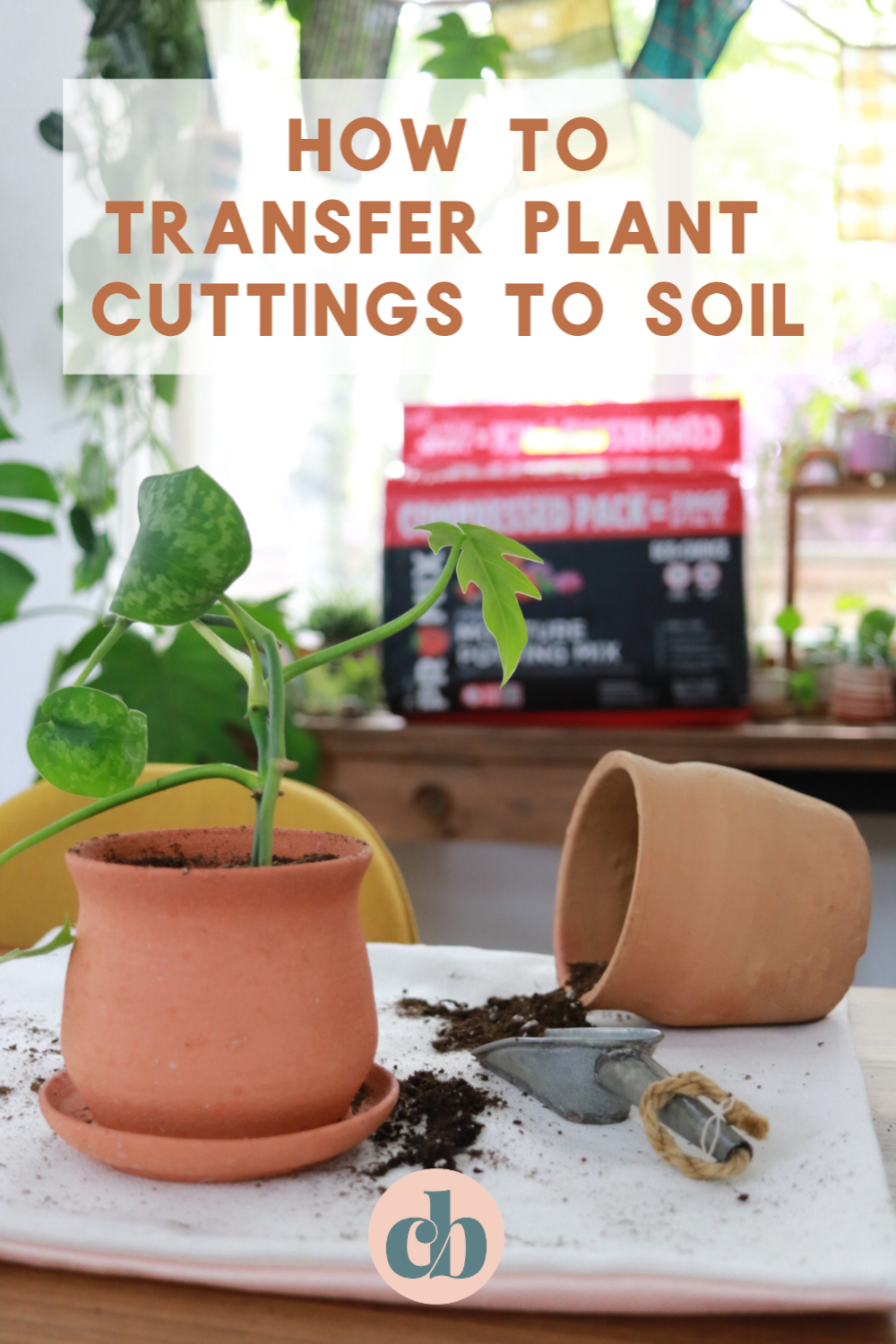
This post is a paid partnership with PRO MIX®.
The time a plant cutting takes to root in water can vary significantly from plant to plant. Pilea peperomioides can start to form roots within one to two days, while Hoyas can take weeks to develop roots.
Technically, you can transfer your cuttings to soil at any time. In fact, you can actually propagate directly into soil, however, it’s much harder to do within your home. When you propagate in soil, you have to keep a good balance of soil moisture, air flow, and humidity. That can be very hard to do inside. I truly believe that water propagation will carry the biggest success rate, especially for beginners.

Are The Roots Long Enough?
I’ve done a lot of propagating over the years. I’ve tested different root lengths for transfer to soil, and came up with this rule of “green thumb” for the best success rate.
Roots should be at least two to four inches long before transferring to soil.
You can absolutely wait until the roots are longer. I’ve kept cuttings in water for months!
What Size Pot Is Best To Use?
It’s really important to use a pot that is relatively the same size as the root system. You want to give the roots room to grow, but not so big that the roots have a hard time retaining all the water. I use a pot that is about 2”-3” bigger around than the root system. Don’t forget to use a pot WITH a drainage hole. If you have a pot with no drainage hole, you can drill your own hole.
Example:
If the roots are about 2” long, then I would use a 4” pot. If the roots were 4” long, then I would use a standard 6” pot. And so on…
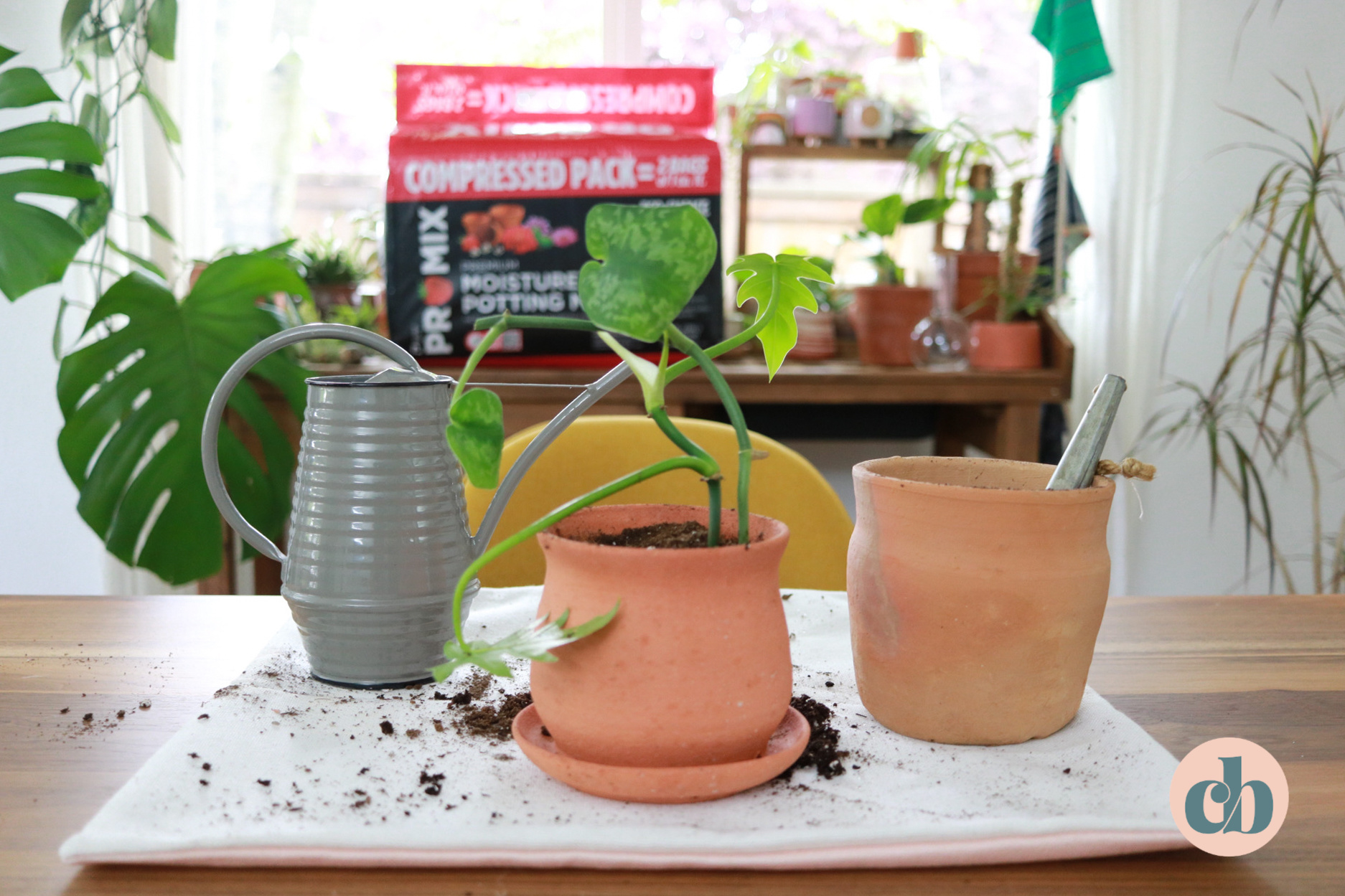
What Kind Of Soil Is Best To Use?
You’ll want to use a premium potting soil to start the cutting off right! I really like to use PRO-MIX Premium Moisture Potting Mix. It’s ideal for seed starting/new plants, potting/repotting, and container gardening. The peat base helps to retain moisture, while the perlite promotes healthy root growth and aeration. PRO-MIX also contains mycorrhizae that builds stronger roots and gives healthier, bigger, and more prolific plants. Definitely a plus when transplanting!
Transfer Your Cuttings To Soil
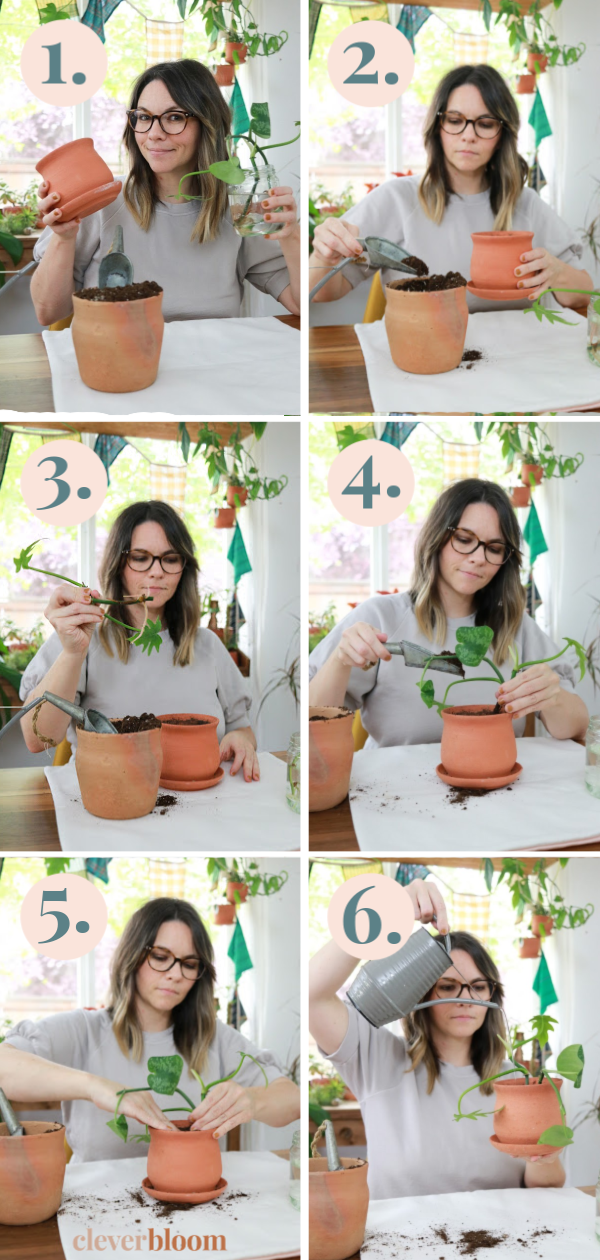
- Prep your new pot with the soil. Place approximately one to two inches of soil in the bottom of the pot.
- Remove the rooted cutting from the water and give it a good rinse with fresh water.
- Place the cutting in the pot and cover the roots with soil. Leave about an inch of space at the top of the pot.
- Now is the time to add any preventative insect control.
- Water the plant thoroughly until water starts to flow through the drainage hole.
Now What?
Place your new plant in an area according to the best light for your particular plant. Most of my succulents live in my south facing window, while my tropicals live between my south and west facing window.
Until the roots are well established, keep the soil moist but not constantly saturated with water.
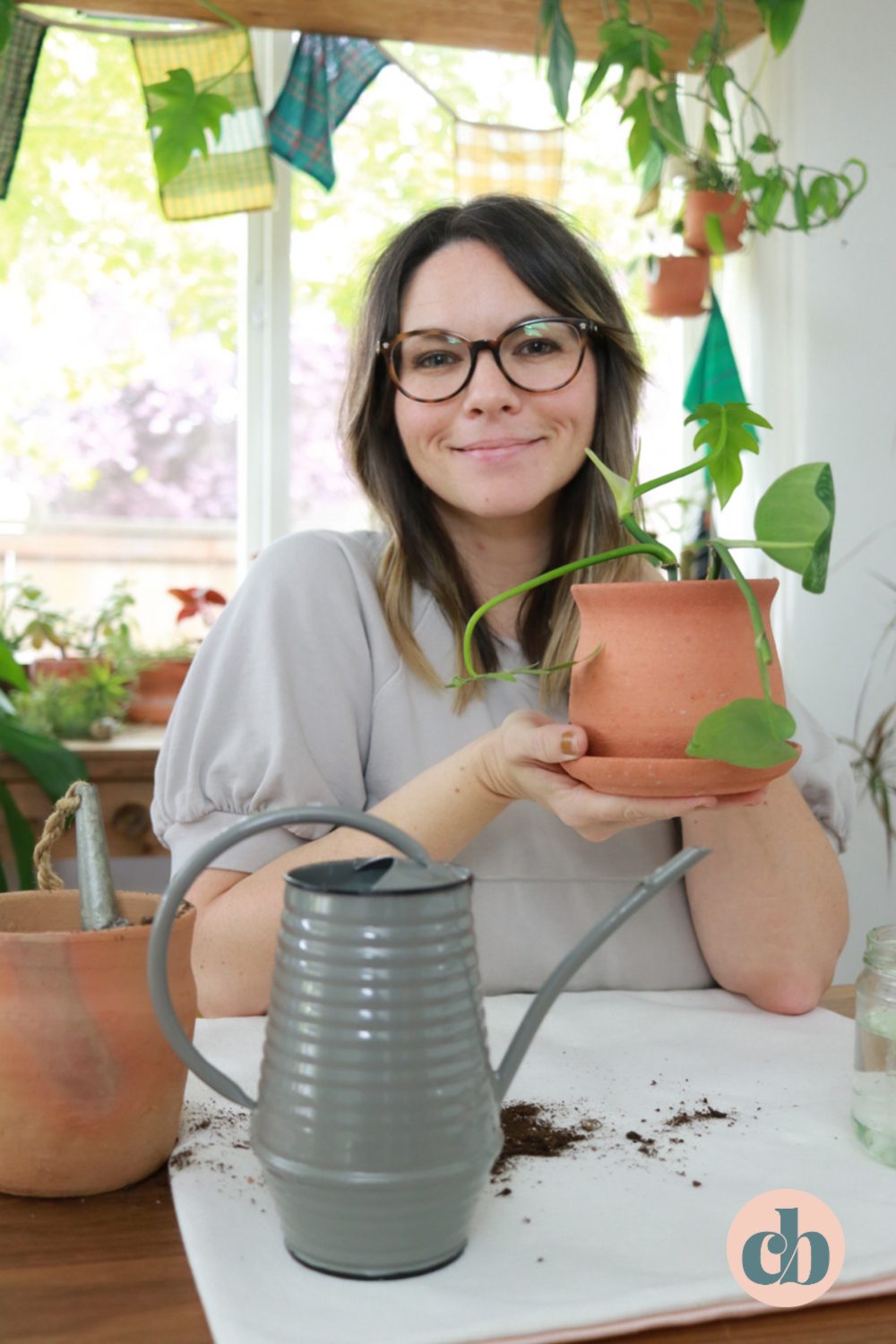
I hope this post was helpful for you. Propagating plants is one of my favorite things to do and it’s super simple! But knowing when to transfer the cuttings, and the best soil to use, will help in the overall success of the plant!
Leave me a comment if you have any questions!

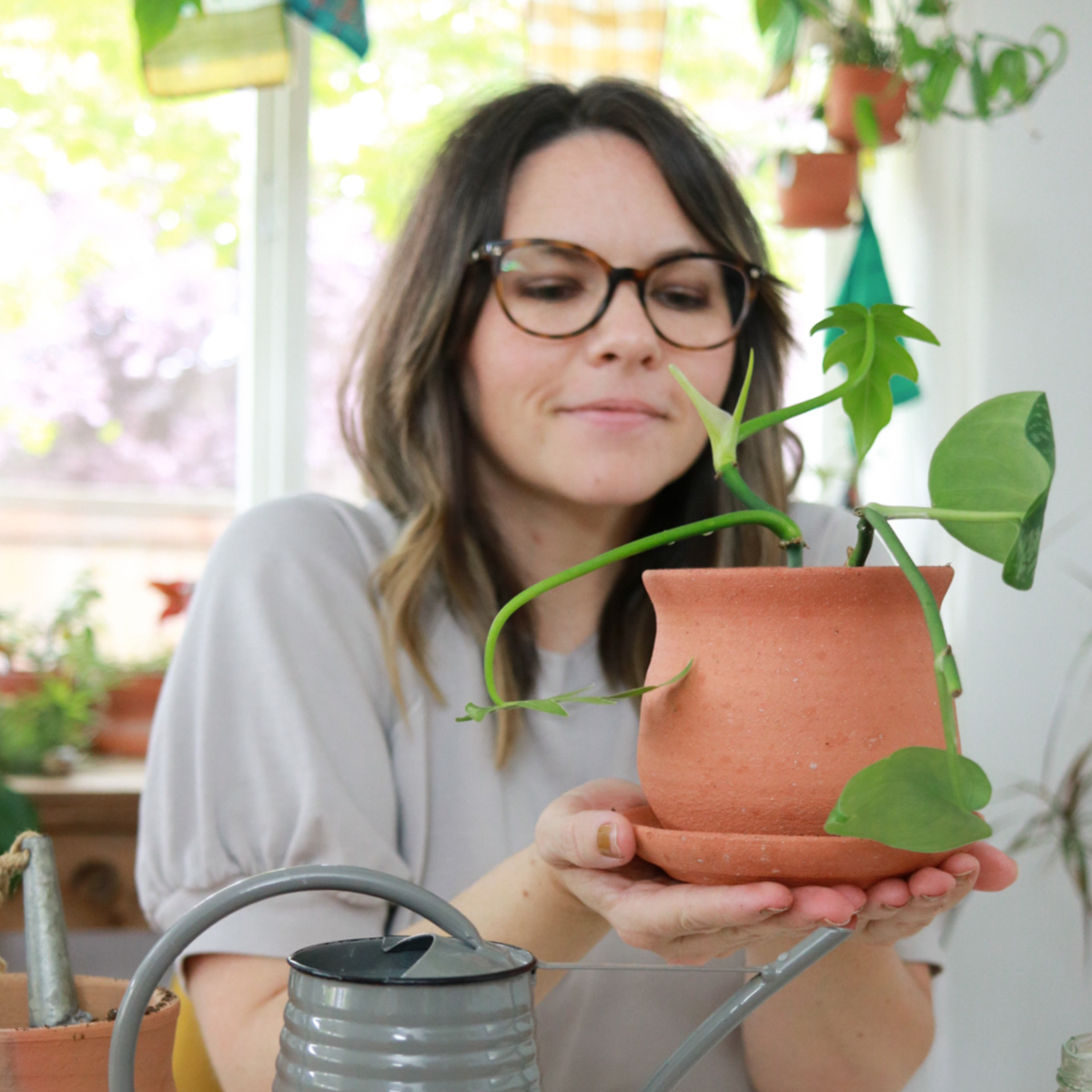
Hello! Just a quick question about my pothos plant. My sister-in-law gave me a starter in water and told me that I never have to plant it in soil. So I’ve just been keeping it in gradually larger glass vases. I’ve noticed over the past few months that the leaves are turning yellow. Not all of them. But one by one, I’ll notice another leaf that has yellowed. I have also noticed what I believe to be root rot on the stems near the roots. My question is how do I prevent the yellowing and root rot when it’s in water? Do I need to move the plant into a pot with soil? If so, how do I go about that?
I have pretty much the same problem with the leaves dropping and yellowing. One plant has been going for two years and now shows these problems. Another I have for five years and now the leaves are falling off. This is a Japanese I believe its called a Bonsai. Can you give me any suggestions for helping these plants get healthy.
Thank you. These plants have been in the house all the time. I do not have southern windows, but they are in daylight from early morning to dark.
You need to either add nutrients to the water or plant it in soil. It is probably missing those. Also, make sure it is in the correct sunlight.
Very good advice. Thanks.
Thanks for the info! I was curious…. I have a wandering jew, that I have cut some offshoots from. They are currently rooting in water, several different containers (some tall shot glasses, some larger, based on length). My question is, when I go to plant, do I spread them out amongst the pot, or plant them in a bunch?
I’m finding conflicting information about whether or not I can put philodendron cuttings, once sprouted, back into the pot with the main plant. I have three cuttings in water right now. If I can’t put them in with the main plant, can I at least plant them all together in one pot? My philodendron has become a one-stalk climber, with small leaves at the end, which isn’t very attractive, hence my question. I’d like it to be fuller.
This doesn’t address the issue of water roots vs soil roots. Moving water prop. plantings (especially long term ones) directly into soil is going to damage those roots and you will have a harder time succeeding.
A better wyay it to replace water with soil over time. When the roots are ready, pour out half of the water, and replace with dampened soil ( so that it doesn’t float). Replace a little more every day until your cutting is mostly in soil, and at this point you can pot it up into whatever pot you’d like–making sure to keep the soil more moist at first than you might normally as the roots are used to being submerged.
That is something to be aware of. I’ve been almost exclusively water propagating for 20 years and I’ve maybe only had a few failures. I think the fact that I transfer fairly quickly helps.
It is because your clipping is lacking nutrients. You can just ad a little fertilizer to the water to fix that.
I love your blog! I’ve been getting into plants recently and I transferred my pathos cuttings from water to soil about a month ago but the leaves are starting to seriously droop. I try to water about one a week and my room is pretty warm (though a little dry). I also put the pathos near a lamp for a light source. All my water cuttings are doing great but it’s just the ones in the soil that aren’t. Do you have an advice to revive my plant or what I’m doing wrong?
Where is this pot from? It’s so cute!
How do you know if the roots are “well established” in the soil? This is for a golden pothos.